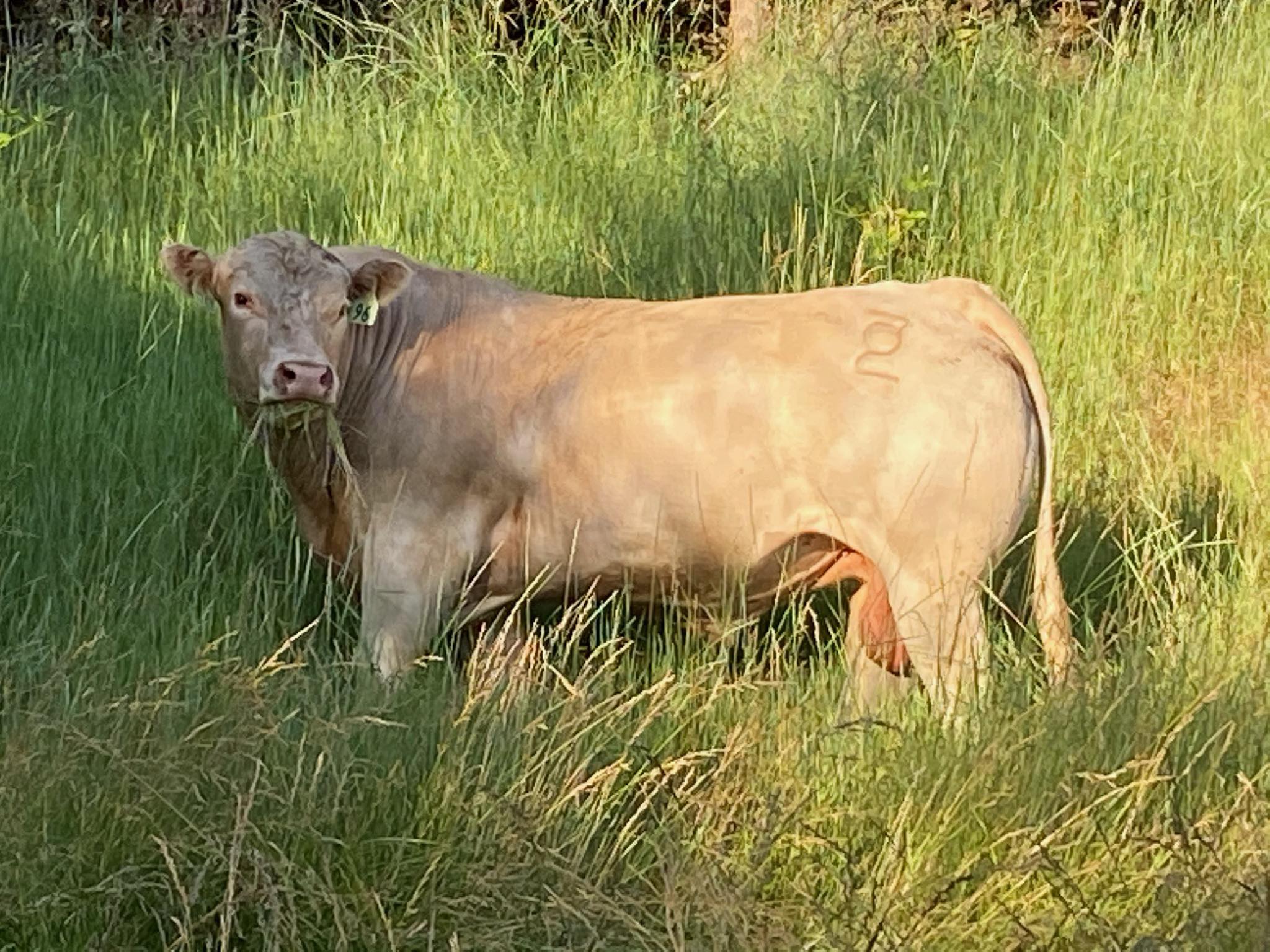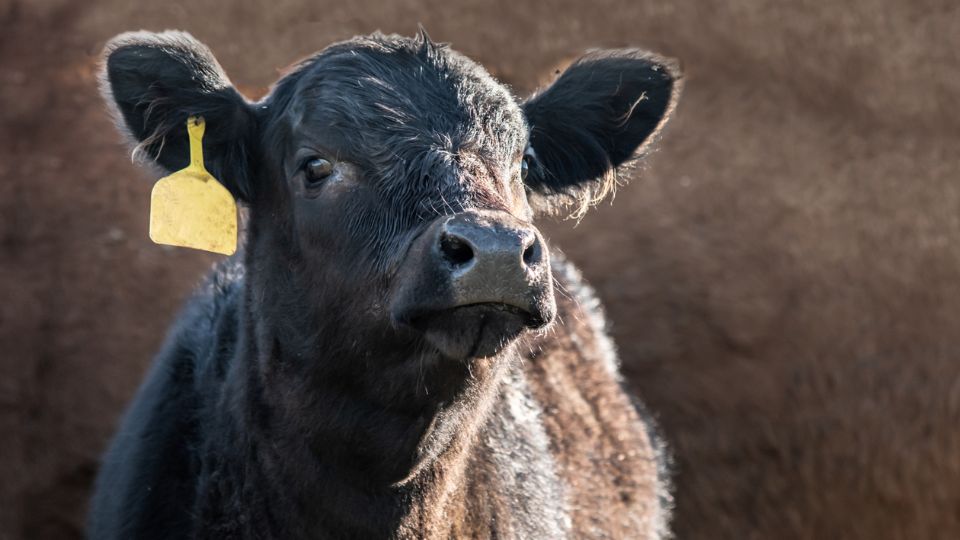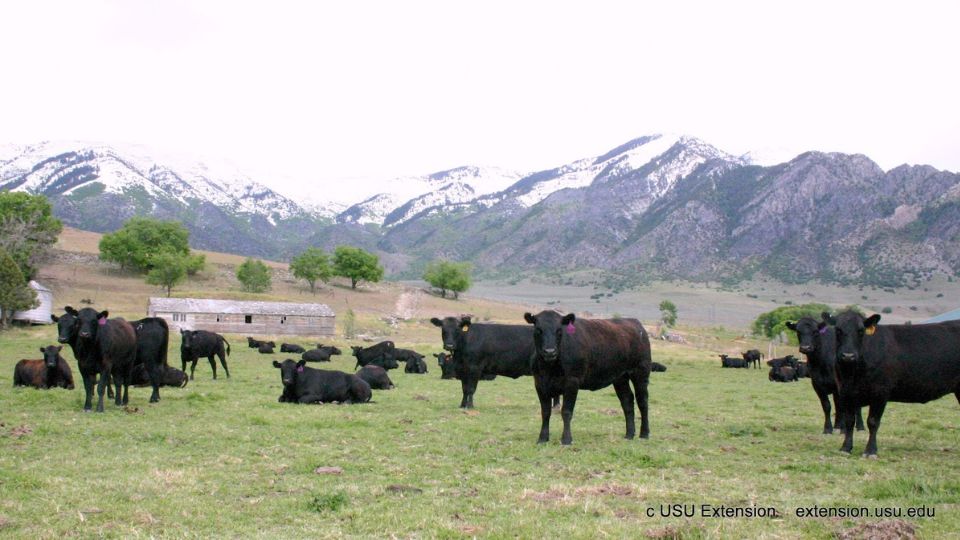Implementing Bos Indicus-Influenced Cattle in Utah for Hybrid Vigor
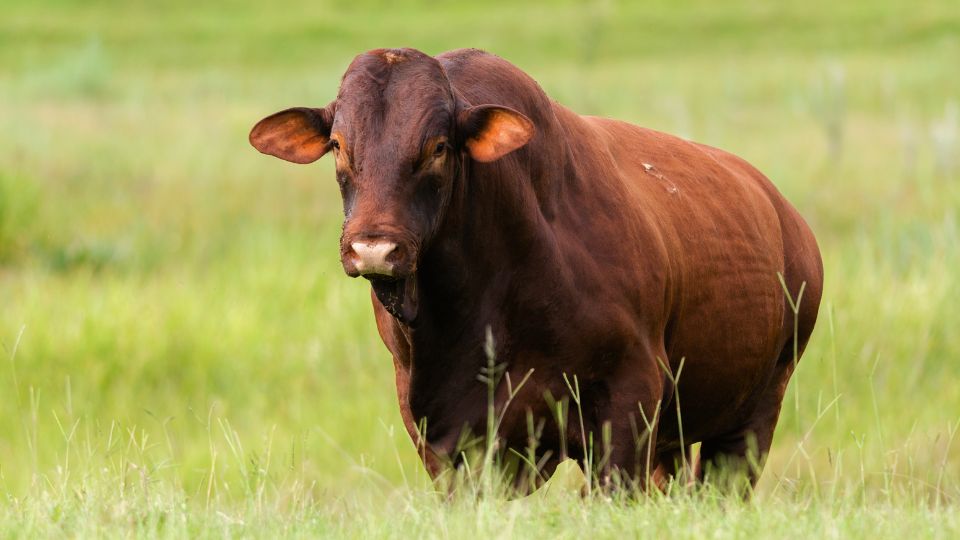
Crossbreeding
Crossbreeding is a tool that cattle producers have been using for decades. When used correctly, crossbreeding can improve productivity and efficiency because of heterosis (hybrid vigor). Hybrid vigor is greatest when crossing two completely different breed backgrounds (Burrell, 1999). Hybrid vigor is most noticeable in traits like fertility and survivability. These types of traits are usually economically important (Bourdon, 2000).
Heterosis
Recently, Utah State University (USU) has incorporated Santa Gertrudis genetics into their herd to increase hybrid vigor. Santa Gertrudis is a Bos indicus-influenced breed of cattle that was established at King Ranch in Texas (Figure 1).
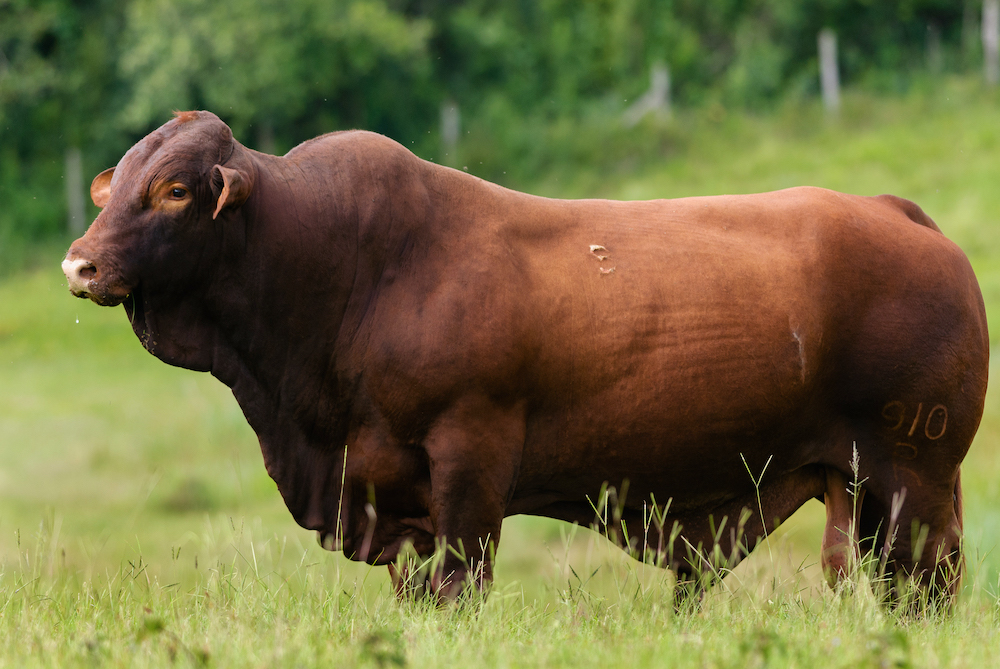
This breed was developed to perform on the native grasses of the South Texas brush country (Santa Gertrudis Breeders International [SGBI], 2023). Santa Gertrudis is a cross of approximately 3/8 Brahman and 5/8 Shorthorn, and is known to thrive in harsh ranching climates all over the world (King Ranch, 2023). This choice of breed was ideal as the USU herd had no Shorthorn or Brahman background. This ensured that there would be 100% hybrid vigor in the first cross and that maximum hybrid vigor would be realized. Furthermore, the first cross would only be approximately 19% Brahman, which the researchers determined was an adequate level to deal with the cold of northern Utah but to also incorporate some of the benefits of the Brahman breed to our crossbred calves.
Bos Indicus Value
The question arises, why should producers in Utah introduce a Bos indicus-influenced breed like Santa Gertrudis into their herd? According to Reichhardt et al. (2021), Bos indicus-influenced cattle can:
- Withstand higher temperatures.
- Consume less water.
- Adapt better to nutritional stress.
- Carry a higher parasite load.
- Have increased longevity compared to Bos taurus cattle.
Utah is no stranger to drought. Since 2000, the longest duration of drought in Utah lasted 288 weeks, and the most intense period of drought occurred in January 2021 (National Integrated Drought Information System [NIDIS], 2020; Figure 2).
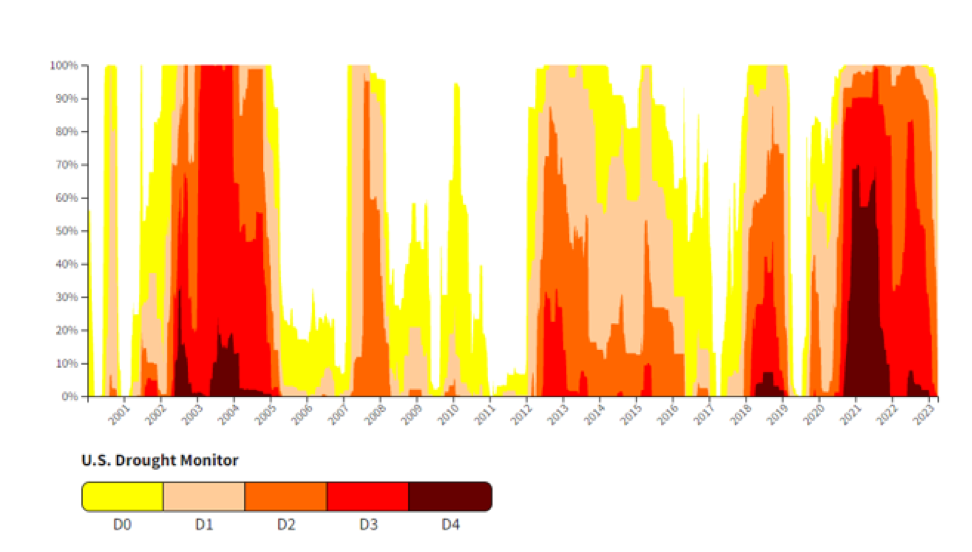
D0 = Abnormally dry; D1 = Moderate drought; D2 = Severe drought; D3 = Extreme drought; D4 = Exceptional drought (NIDIS, 2020)
Additionally, in 1985, a record cold of -69.0 F and a record hot of 117 F was recorded in Utah (Utah: Life Elevated, 2023). In other words, Utah is known to have environments of extremes. Utah experiences drought, extremely high temperatures, and extremely low temperatures. Cattle in Utah live in a harsh environment and are expected to perform.
Santa Gertrudis cattle offer a great option for Utah producers to maximize hybrid vigor, along with breed characteristics that thrive in harsh environments. Approximately 8% of the cattle inventory in the United States are Bos indicus; however, this percentage is significantly lower in Utah (Cundiff, Thallman, & Kuehn, 2012). This offers an opportunity for maximum hybrid vigor by crossing two completely different breed backgrounds. For example, crossing an Angus cow with a Santa Gertrudis bull results in a cross between two parents with different breed backgrounds. An Angus x Santa Gertrudis cross results in maximum hybrid vigor with the beneficial carcass traits of Bos taurus breeds with the beneficial hardiness of Bos indicus breeds.
Conclusion
If producers are looking to increase hybrid vigor in their herds, Bos indicus-influenced breeds like Santa Gertrudis may be a great place to start. When introducing any new breed into a cattle herd, it is important that producers research breed characteristics and make sure they are compatible with their herd and environment. Secondly, it is important to introduce genetics from reputable breeders to ensure quality genetics.
References
- Bourdon, R. M. (2000). Understanding animal breeding. Prentice Hall.
- Burrell, C. (1999). How can I benefit from heterosis and still maintain uniformity in my calves? Presented at the 19th Annual Utah Beef Cattle Field Day, Brigham Young University, Provo, UT.
- Cundiff, L. V., Thallman, R. M., & Kuehn, L. A. (2012). Impact of Bos indicus genetics on the global beef industry. The American Brahman Review, 3, 49–52.
- King Ranch. (2023). Cattle. Retrieved February 21, 2023, from https://king-ranch.com/about-us/history/cattle/.
- National Integrated Drought Information System (NIDIS). (2020). Drought in Utah. Drought.gov. Retrieved October 15, 2020, from https://www.drought.gov/drought/states/utah.
- Reichhardt, C. C., Feuz, R., Brady, T. J., Motsinger, L. A., Briggs, R. K., Bowman, B. R., Garcia, M. D., Larsen, R., & Thornton, K. J. (2021). Interactions between cattle breed type and anabolic implant strategy impact circulating serum metabolites, feedlot performance, feeding behavior, carcass characteristics, and economic return in beef steers. Domestic Animal Endocrinology, 77, 106633. doi: https://doi.org/10.1016/j.domaniend.2021.106633.
- Santa Gertrudis Breeders International (SGBI). (2023). Breed history. https://santagertrudis.com/sgbi/santa-gertrudis-breed-history/.
- Utah: Life Elevated. (2023). Utah weather. Utah Office of Tourism. Retrieved February 21, 2023, from https://www.visitutah.com:443/plan-your-trip/weather.
Published April 2022
Utah State University Extension
Peer-reviewed fact sheet
Authors
Reganne K. Briggs and Matthew D. Garcia
Related Research



